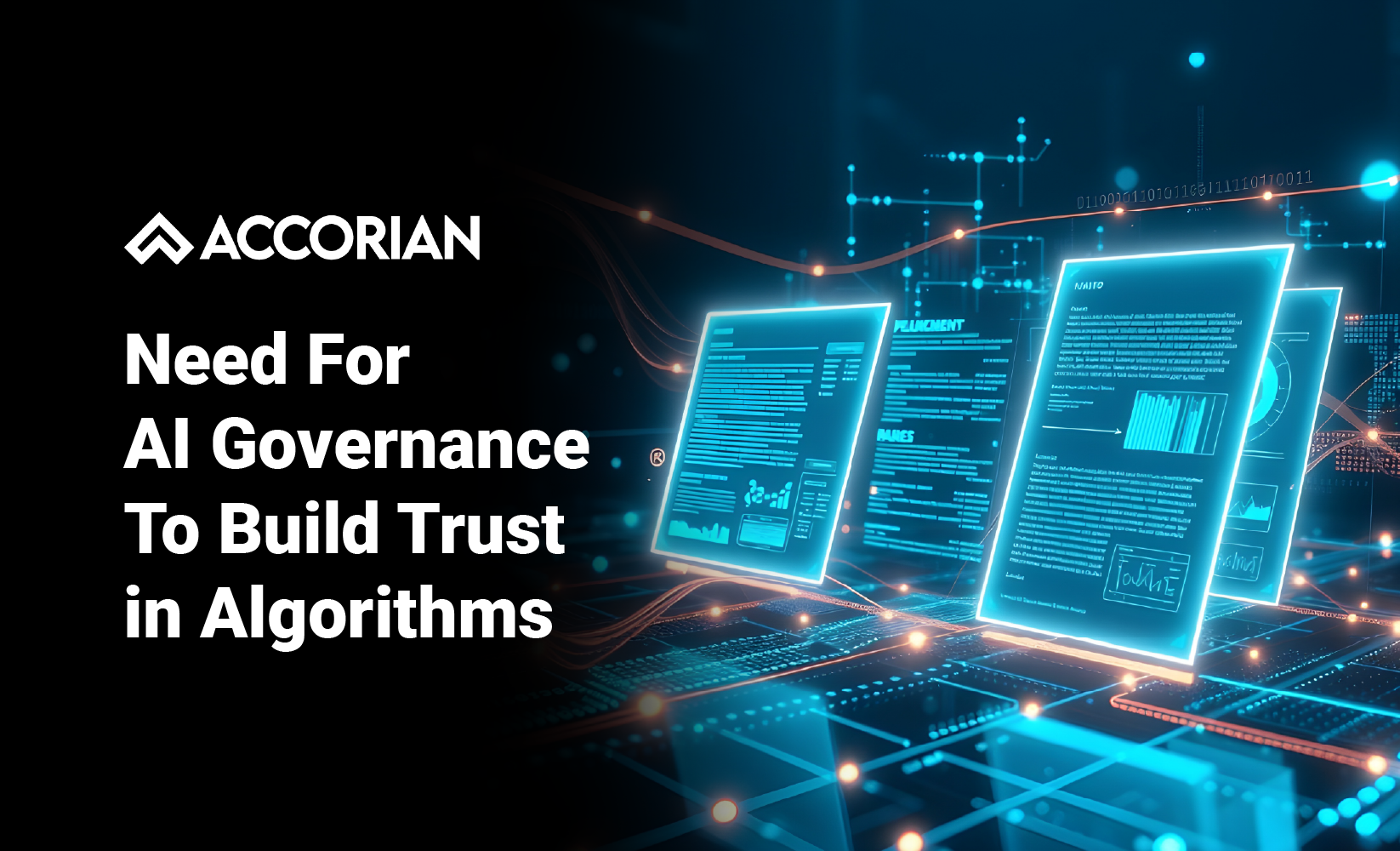The Age of Algorithmic Authority
Artificial Intelligence (AI) has transcended its experimental roots to become a foundational force in global decision-making. From healthcare diagnostics and financial risk modeling to hiring practices and criminal sentencing, algorithms now influence outcomes that shape lives, economies, and societies.
Yet as AI systems grow more powerful, a critical question emerges:
Who governs the algorithm?
In 2025, this question is no longer philosophical; it’s regulatory, ethical, and operational. The stakes are high, and the trust deficit is growing.
According to the Annual AI Governance Report 2025, over 72% of global enterprises deploy AI in core decision-making, but only 38% have formal governance frameworks in place. This imbalance has led to rising public concern, regulatory scrutiny, and reputational risk.
The Trust Crisis in AI
AI’s promise is immense, but so is its potential for harm when left unchecked. Recent incidents have exposed the dangers of opaque algorithms:
- A major U.S. bank faced backlash after its AI-driven loan approval system was found to disproportionately reject applications from minority communities.
- A European healthcare provider’s diagnostic AI misclassified symptoms due to biased training data, leading to delayed treatments.
- Facial recognition systems used by law enforcement have shown error rates up to 34% for people of color.
These failures aren’t just technical; they’re ethical. And they’ve sparked a global movement toward transparent, accountable AI governance.
Global Regulatory Momentum
Governments worldwide are racing to regulate AI:
- European Union: The EU AI Act, expected to be fully enforced by 2026, classifies AI systems by risk level and mandates transparency, human oversight, and documentation for high-risk applications.
- United States: The Algorithmic Accountability Act 2.0 requires companies to audit automated decision systems for bias and discrimination.
- India: The Digital Personal Data Protection Act includes provisions for AI transparency and user consent in automated profiling.
- China: The Generative AI Regulation enforces content moderation, data provenance, and algorithmic explainability.
These frameworks signal a shift:
AI governance is becoming a legal obligation, not a voluntary best practice.
Why AI Governance Matters Now More Than Ever
AI adoption has surged across industries:
Healthcare: 89% of providers use AI for diagnostics, patient triage, and drug discovery.
- Risks: Misdiagnosis, data privacy violations, algorithmic bias
- Regulations: HIPAA, EU AI Act, India’s DPDP Act
- Governance Focus: Explainability, patient consent, clinical validation
Finance: 76% of banks deploy AI for fraud detection, credit scoring, and algorithmic trading.
- Risks: Discriminatory lending, market manipulation, opaque decisioning
- Regulations: Basel III, Fair Credit Reporting Act, RBI guidelines
- Governance Focus: Auditability, fairness, real-time monitoring
Retail: 68% of retailers use AI for demand forecasting, personalization, and inventory optimization.
- Risks: Biased personalization, surveillance concerns, data misuse
- Regulations: GDPR, CCPA, ePrivacy Directive
- Governance Focus: Consent management, transparency, ethical profiling
Manufacturing: 61% of manufacturers rely on AI for predictive maintenance and supply chain automation.
- Risks: Safety failures, supply chain opacity, IP leakage
- Regulations: ISO/IEC 42001, OSHA AI guidelines
- Governance Focus: Operational oversight, model drift detection, secure deployment
Yet only 38% of organizations have formal AI governance frameworks in place. This gap exposes businesses to reputational damage, legal liability, and ethical risk.
What Transparent AI Oversight Looks Like
To build trust, organizations must go beyond compliance. Transparent AI oversight involves five key pillars:
1. Explainability and Interpretability: AI systems must be able to explain their decisions in human-understandable terms. This is especially critical in regulated sectors like healthcare, finance, and criminal justice.
- Tools like SHAP, LIME, and counterfactual analysis are now standard in model development.
- In 2025, 84% of AI developers cite explainability as a top priority.
2. Ethical Review Boards: Leading organizations are forming internal AI ethics boards to review model behavior, training data, and deployment risks. These boards often include cross-functional experts – data scientists, legal advisors, ethicists, and community stakeholders.
- 47% of Fortune 500 companies now have dedicated AI governance teams.
3. Continuous Monitoring and Auditing: AI oversight isn’t a one-time event; it’s a continuous process. Real-time monitoring, bias detection, and post-deployment audits are essential.
- Platforms like Accorian’s AI Risk Dashboard offer live visibility into model performance, drift, and compliance metrics.
4. Transparency Reports: Just as companies publish financial statements, many now release AI transparency reports detailing how models are trained, tested, and governed.
- Microsoft’s 2025 Responsible AI Transparency Report set a new benchmark, outlining model lineage, risk assessments, and stakeholder feedback loops.
5. Human-in-the-Loop Safeguards: Even the most advanced AI systems must include human oversight, especially in high-stakes decisions. Human-in-the-loop (HITL) frameworks ensure accountability and prevent automation from overriding ethical judgment.
Accorian’s Role in AI Governance
At Accorian, we believe that trustworthy AI is not just a technical goal; it’s a strategic imperative. Our AI Oversight Framework helps organizations design, deploy, and govern AI systems with integrity, accountability, and resilience.
How Accorian Helps:
- AI Governance Assessments: We evaluate your current AI landscape, identify oversight gaps, and align your systems with global regulatory standards.
- Bias and Risk Audits: Our experts conduct deep audits to uncover hidden biases, model drift, and compliance risks, before they become liabilities.
- Transparency Enablement: We help you build explainability into your models and craft transparency reports that build stakeholder confidence.
- Ethics Board Enablement: We guide the formation of internal AI ethics boards, providing templates, training, and advisory support.
- Secure AI Deployment: We ensure your AI systems are not only ethical but secure, protecting against adversarial attacks, data leakage, and misuse.
Whether you’re a fintech startup deploying predictive models or a global enterprise scaling generative AI, Accorian helps you govern the algorithm ethically, securely, and transparently.
Governing the Algorithm Is Governing the Future
In the age of algorithms, trust isn’t given; it’s engineered. Transparent AI oversight is the foundation of ethical innovation, regulatory compliance, and public confidence.
Organizations that embrace governance don’t just mitigate risk, they unlock the full potential of AI to serve humanity. Because the future isn’t just powered by algorithms, it’s shaped by how we govern them.



